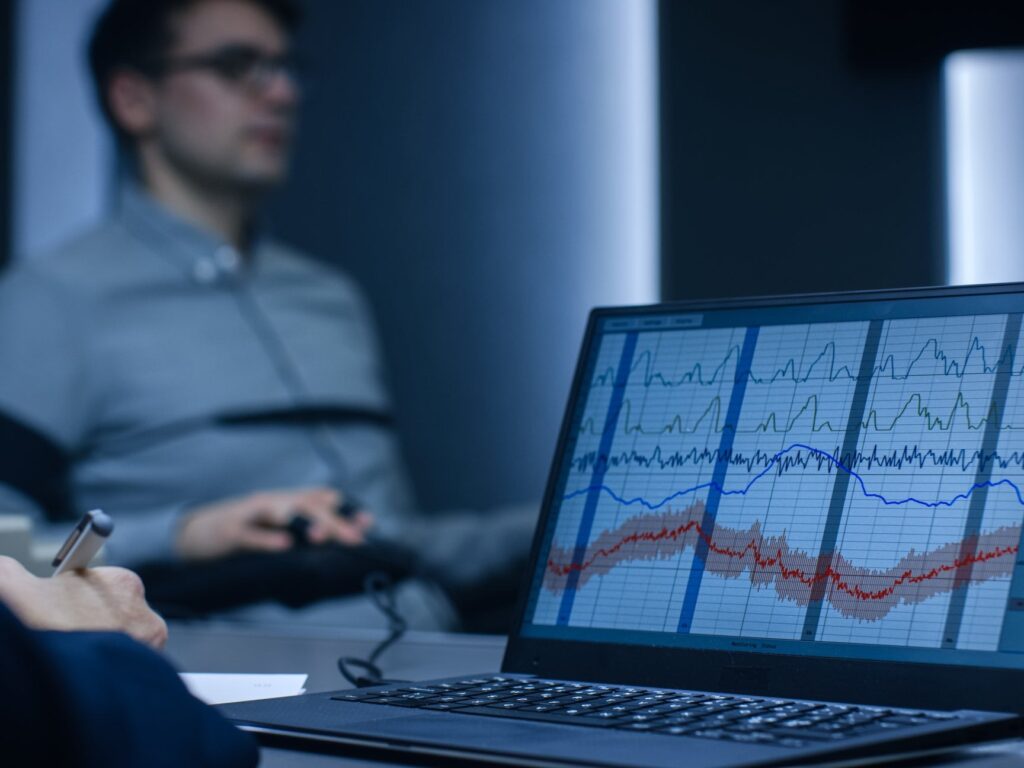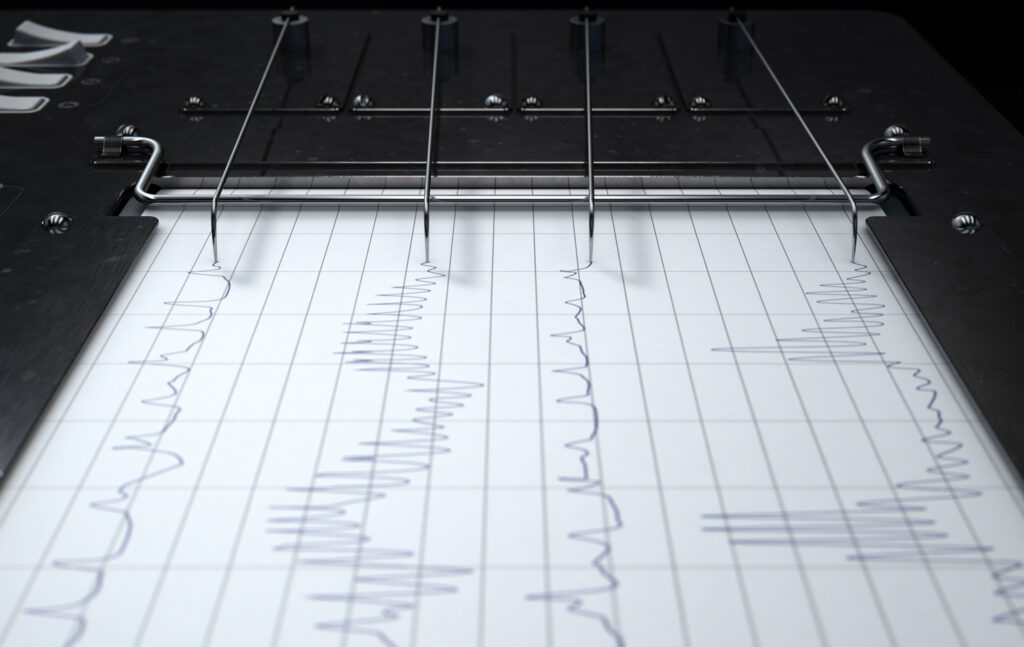A lie detector test, also known as polygraph test, is a test to measure physiological tags of truthfulness. Due to misunderstanding caused by television and movies, many individuals become nervous about these tests. Knowing the truth will help you minimise the stress and ensure that you are ready.
The polygraph tests measure the pulse rate, blood pressure, respiration, and skin conductivity. Such measurements notice alterations, which can signal faking. It consists of several stages such as pre-test interviews, testing, and analysis of results. Although not perfect, polygraph tests can still be useful in investigations and security clearances.

How Polygraph Tests Actually Work
Polygraph test machines do not detect lies per se. They test, rather, involuntary reactions of your body to questions. The instruments monitor four important physiological variables.
First, it affects your cardiovascular system. When individuals are stressed or lying, the heart rate and blood pressure do tend to rise. The machine can capture these changes by use of a blood pressure cuff in your arm.
Stress also alters breathing. Two tubes round your chest and abdomen measure your depth and your respiratory rate. Rushing or uneven breathing can signal nervousness or lies.
The third measure is skin conductivity. Your wetness level is measured on electrodes on your fingertips. When stressful, sweating occurs which results in elevated electrical conductivity readings.
Contemporary polygraph machines contain extra sensors. Such monitors may track fidgeting, voice stress or eye movement patterns. Polygraph testing is still based on four main measurements.
The Complete Testing Process
Pre-Test Interview Phase
The first part starts with a 60-90 minute interview by your examiner. This discussion is not just mere preparation.
The examiner explains every step of the process. They will explain how the machineries operate and what you will feel. Such openness lessens stress that may challenge your performance.
Afterward, they will inspect your background and the purpose of investigation. You will talk about the particular problems or charges under study. This context is necessary to provide suitable questions in the exam.
At this stage, question formulation occurs. Depending on the focus of the investigation, your examiner will design special questions. They will go through these questions with you in advance so that you know what is being requested.
The Actual Test Session
The testing part normally takes 60-90 minutes. You will be seated on a comfortable chair as the examiner puts on monitoring equipment.
The pressure cuff is placed on the non- dominant arm. Your chest and abdomen are covered by breathing tubes. Conductive gel is applied onto your fingertips to bond with electrodes. Installation takes an average of 10 minutes.
Testing uses several series of questions, or rather charts. The charts have 8-12 questions, there is 15-20 seconds between them. You will answer every question with either yes or no.
Questions are grouped into three. Relevant questions focus on the center of the investigation. Control questions involve general areas of dishonesty. Pointless questions are your base of responses.
The examiner performs at least three to five charts. Between charts, you will enjoy short breaks to rest, and adjust equipment where necessary.
Common Myths About Polygraph Tests
Polygraphs Are 100% Accurate
In controlled tests, Polygraph tests are about 85-95% accurate. Nevertheless, the many factors may affect the outcomes such as medical conditions, medications, and mental issues.
False positives are false alone answers of honest individuals. These wrong readings may be caused by anxiety, fear or some medical conditions. Such possibilities are considered by professional examiners during analysis.
False negatives occur when liars become honest. Some people do tend to exhibit little physiology. Other people might employ countermeasures, but these usually can be recognized by seasoned examiners.
You Can Easily Beat a Polygraph
Simple ways of passing Polygraph tests can be seen on TV. The reality is much more complicated than these fictional portrayals will imply.
The physical defenses such as pinching shoes with tacks or biting tongue rarely work. Contemporary examiners are vigilant to these methods and most can be caught.
Mental countermeasures take years of training and exercise. Then, however, success is not absolute against clever examiners with elaborate gear.
Polygraph Results Are Always Admissible in Court
The admissibility of law differs greatly by jurisdiction. Polygraph evidence is admitted in certain courts. Others lock it out in any case.
In most jurisdictions, polygraph evidence is permitted only with the will of both sides. This mutual consent requirement restricts the use in the court significantly.
Preparing for Your Polygraph Test
With a bit of planning, you can have a much better test. Begin by having proper rest the eve before your appointment. Fatigue may influence your physiology and make you get anxious.
Do not take alcohol and recreational drugs 24 hours prior to the test. These can confuse a proper indication and can invalidate your work altogether.
Two hours before your exam time, eat light. Avoid stimulants and caffeine that might reduce your heart rate and blood pressure. Drink a lot and do not overhydrate.
Wear loose attires. Avoid tight clothing which may obstruct the breathing apparatus or circulation. Take away smartwatches and dialog trackers, which may lead to electrical interferences.
Tell the truth all the way. Deceiving always backfires and complicates the situation even more. Professional polygraphers are well trained to identify lies and countermeasures.

Conclusion
Polygraph tests should not be a dreaded activity when you know what to expect. Licensed examiners adhere to certain protocols which are aimed at establishing proper and fair results to all parties.
Polygraph tests are just tools and not magic instruments. They record the physiological reaction that needs human interpretation to predict deception. Certified examiners will have various factors to analyse your results.
Being subjected to polygraph test, concentrate on truthfulness and compliance. Realize that the procedure is essential in investigations and security clearances.
FAQs
Which medical conditions can have an impact on my polygraph?
Polygraph readings can be affected by heart diseases, hypertension, diabetes, anxiety disorders. Discuss any medical situations and medications with your examiner in advance.
What is the validity of polygraphs used in employment?
Most organisations view polygraph as valid in 12 to 24 months to be used in employment screening.
May I seek a second opinion on my polygraph results?
Yes, in most instances, you may demand an individual review of polygraph results. Several professional polygraphs provide second opinions of competent examiners.
